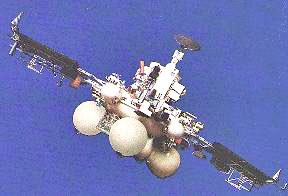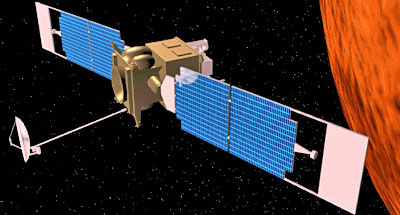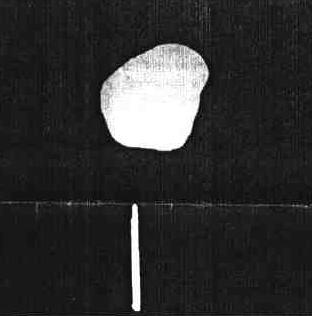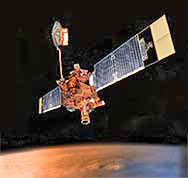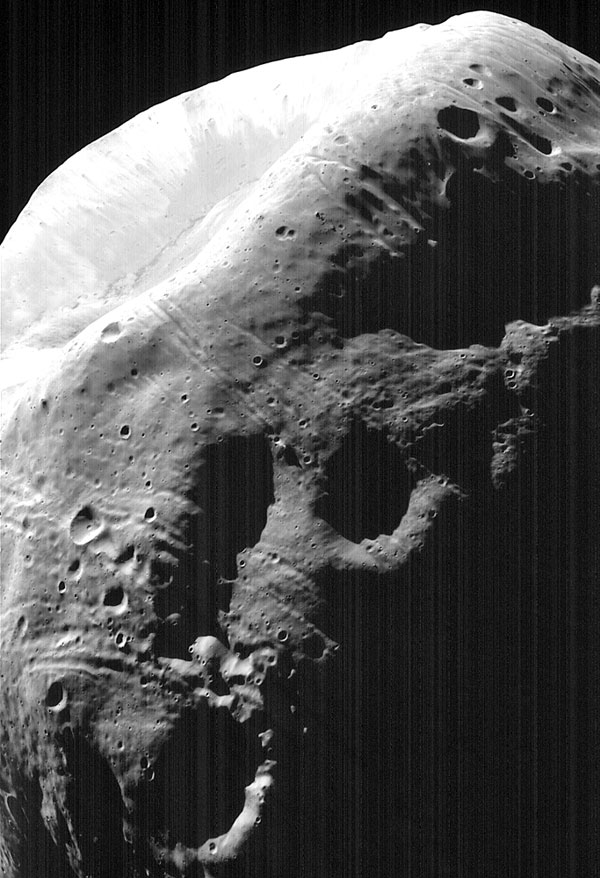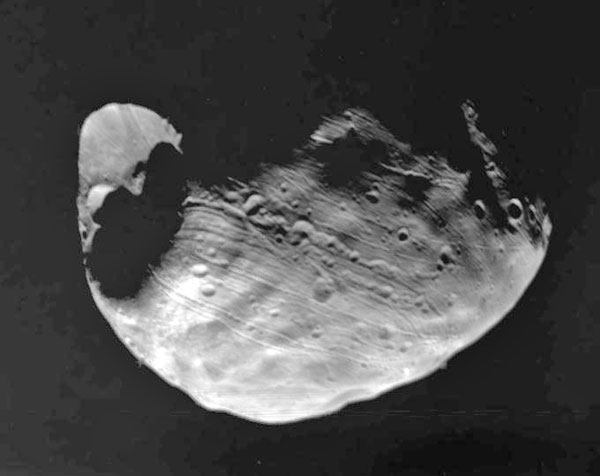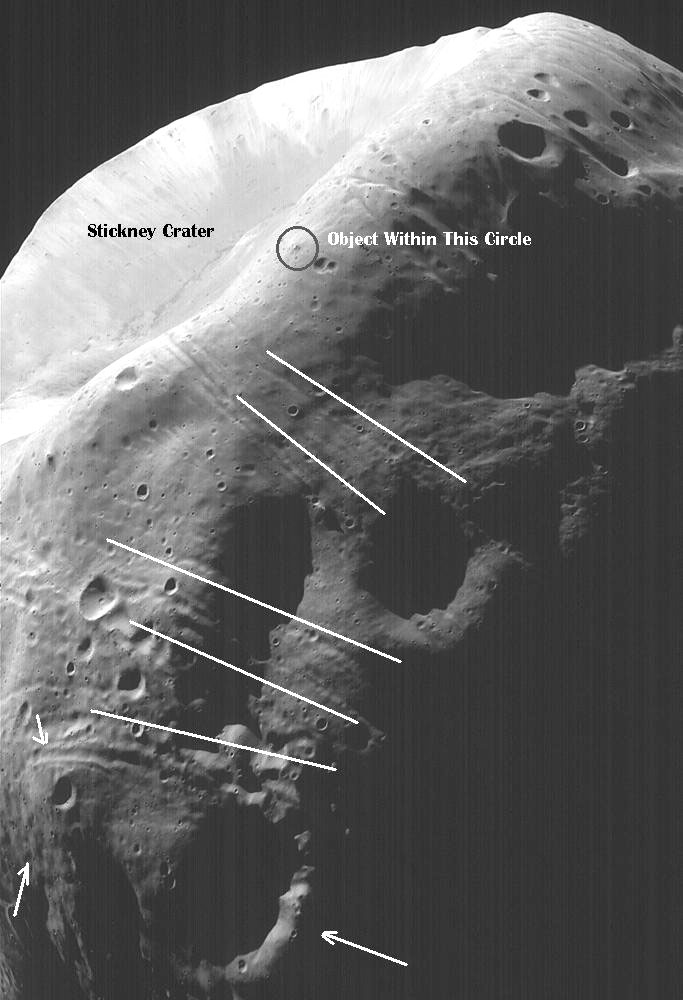|
2003
from
ProjectProve Website
Most of us who follow the study of UFOs, have by now heard the story of the ill-fated Soviet Mars probe Phobos-2. On 25 March 1989, the Soviets claimed their probe was destroyed by a mysterious "craft" orbiting Mars in the vicinity of the Moon Phobos. They proffered the last photograph transmitted by the probe as evidence for this claim. Some have said that this story was only touted to cover incompetence in the Soviet Mars programme. But was it? Is this 1989 event the ONLY instance of something out of the ordinary associated with Phobos?
Above is a photo taken by Mars Global Surveyor depicting a part of the Moon Phobos, and its most prominent feature Stickney Crater. This photo is shown to you untouched for comparison. (Photo Source JPL) The crater is a really strange formation on closer examination. Especially when taken along with its surroundings. One would logically expect that the impact which created Stickney should have shattered Phobos. Odd that it didnít. We will continue with another view of Phobos and Stickney Crater.
This view shows us the entire Moon Phobos. Note that there is a smaller crater within Stickney. Now we will examine the most unusual characteristic of Phobos. This is the series of "striations" which seem to run the length of the moon. These appear to radiate from Stickney, and are explained by scientists as cracks in the moon caused by the great impact which created the large crater.
The general pattern of the striations have been marked out for you in white. Note that they DO NOT all radiate from Stickney Crater itself. Why not? If they are all a result of a huge impact, all the "cracks" should do so. However, those lines in the solid rock toward the top of Phobos donít seem to be associated with Stickney at all. The next photo is even more compelling.
Please note the lines in white. These are placed to illustrate that
the striations donít radiate from Stickney Crater, but are instead
more or less parallel to each other. The area denoted by the arrows
shows a "lump" of rock on the side of Phobos which is set apart in
that it is surrounded by what appear to be circular striations. What
all this seems to mean is that Phobos could be composed of
Sedimentary Rock. But this kind of rock is formed by
water eroded muds, sands, and clays settling out in water filled basins. What
would a chunk of such rock, miles in size, be doing revolving about
Mars??
What can be seen now is a close-up of the area in the black circle
from the previous photo. Notice that the arrow points to something
unusual to say the least. Is that a spacecraft? A
space-plane? What
this writer sees there doesnít appear to be geological. NOTHING else
seen on any photograph of the surface of Phobos has anything like
the appearance of this object. Is looks like it has delta wings, and
a tail. It seems to be metallic. And it is raised above the surface,
in that one can observe that it casts a shadow on the ground. Quite
shocking!! There should be nothing but dirt, dust, and craters on a
lifeless moon like this. Modern science assures us that Phobos is an
airless, dead piece of rock.
Itís up to YOU to make up your own mind about this case.
What do YOU think?
|

